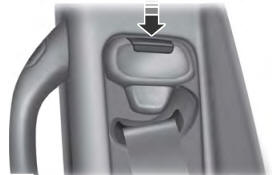Ford Explorer: Electronic Engine Controls - 2.3L EcoBoost (201kW/273PS) / Description and Operation - Electronic Engine Controls - Component Location
Ford Explorer 2020-2025 Service Manual / Powertrain / Engine / Electronic Engine Controls - 2.3L EcoBoost (201kW/273PS) / Description and Operation - Electronic Engine Controls - Component Location
Electronic Engine Controls- Front
.jpg)
| Item | Description |
|---|---|
| 1 | CMP \Intake sensor |
| 2 | CMP Exhaust sensor |
| 3 | MAPT sensor |
| 4 | Variable Camshaft Timing VCT Oil Control Solenoid Exhaust |
| 5 | Variable Camshaft Timing VCT Oil Control Solenoid Intake |
| 6 | Turbocharger Boost Pressure Sensor |
| 7 | IAT sensor |
| 8 | CKP sensor |
| 9 | PCM |
| 10 | Turbocharger Bypass Valve |
| 11 | Crankcase pressure sensor |
| 12 | Cylinder Head Temperature 2 (CHT2) sensor |
Electronic Engine Controls - LH side
.jpg)
| Item | Description |
|---|---|
| 1 | FRP sensor |
| 2 | KS sensors |
| 3 | Oil Pressure Control Solenoid |
| 4 | EOP sensor |
Electronic engine Controls - Rear of engine
.jpg)
| Item | Description |
|---|---|
| 1 | HO2S (HO2S) sensor |
| 2 | Catalyst Monitor sensor |
| 3 | ECT sensor |
 Description and Operation - Electronic Engine Controls - Overview
Description and Operation - Electronic Engine Controls - Overview
Overview
The
EEC system provides optimum control of the engine through the enhanced
capability of the powertrain control module (PCM). The EEC system also
has an on board diagnostic (OBD) monitori..
Other information:
Ford Explorer 2020-2025 Service Manual: Removal and Installation - Second Row Seat Head Restraint Guide Sleeve
Special Tool(s) / General Equipment Flat-Bladed Screwdriver Removal Second row outboard seat - Base vehicle Push the second row outboard seat head restraint release buttons. Remove the second row outboard seat head restraint...
Ford Explorer 2020-2025 Service Manual: Diagnosis and Testing - Fog Lamps
Diagnostic Trouble Code (DTC) Chart Diagnostics in this manual assume a certain skill level and knowledge of Ford-specific diagnostic practices. REFER to: Diagnostic Methods (100-00 General Information, Description and Operation). Diagnostic Trouble Code Chart Module DTC Description Action BCM B1147:1..
Categories
- Manuals Home
- 6th Generation Explorer Owners Manual
- 6th Generation Explorer Service Manual
- Body and Paint
- General Procedures - Brake Service Mode Activation and Deactivation
- General Procedures - Rear Camber Adjustment
- New on site
- Most important about car
Seatbelt Height Adjustment
WARNING: Position the seatbelt height adjuster so that the seatbelt rests across the middle of your shoulder. Failure to adjust the seatbelt correctly could reduce its effectiveness and increase the risk of injury in a crash.

Copyright © 2025 www.foexplorer.com

